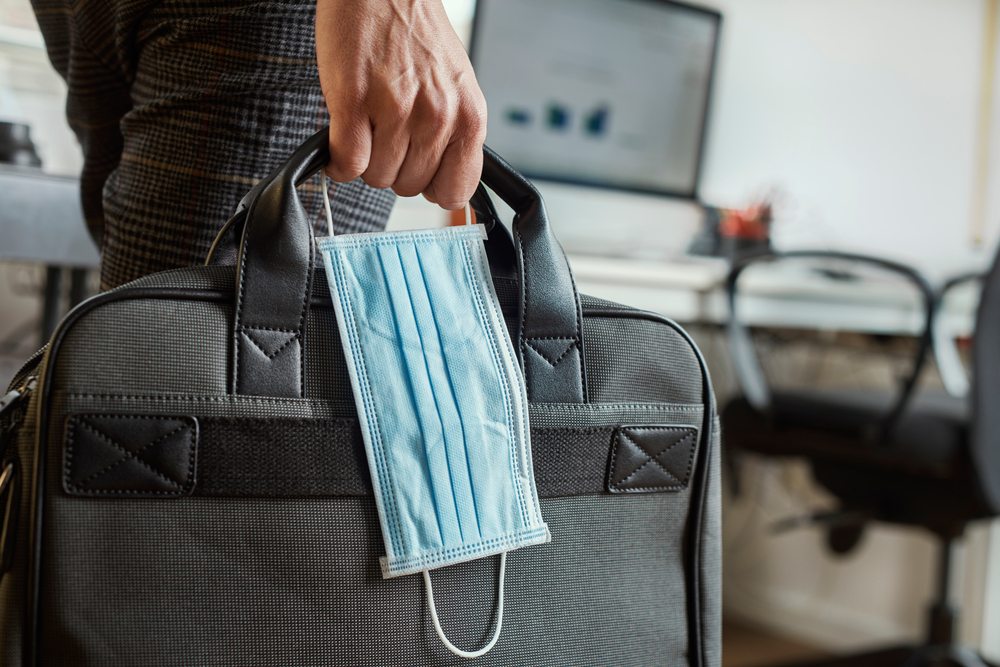The Occupational Safety and Health Administration (OSHA) did not sufficiently protect American workers during the COVID-19 pandemic, the Department of Labor’s (DOL) Office of the Inspector General (OIG) concluded in an audit released October 31. An earlier OIG report found that OSHA reduced the number of inspections it conducted at a time when complaints increased significantly.
The new audit examined whether OSHA’s enforcement activities helped protect workers from COVID-19 health hazards. The audit found that OSHA:
- Did not issue citations to enforce its standard for recording and reporting occupational injuries and illnesses in 15% of sampled fatality inspections,
- Lacks complete information on COVID-19 infection rates at worksites, and
- Closed inspections without ensuring the agency received and reviewed all items requested from employers to demonstrate that COVID-19 health hazards had been mitigated.
The Occupational Safety and Health Act requires OSHA to issue a citation for a violation unless the area office documents the area director’s decision to not issue a citation. The OIG concluded that OSHA had not developed internal policy that ensured area offices issued citations or properly documented circumstances to support a decision not to issue a citation.
The OIG examined a sample of 66 out of 643 closed inspections conducted February 1, 2020, through January 31, 2021. Of the 66 inspections, 41 were prompted by fatalities, 5 were prompted by worker hospitalizations, and 20 were prompted by complaints about mass COVID-19 positive cases, the lack of personal protective equipment (PPE), PPE training, respirator fit testing, routine cleaning, or not following CDC guidelines for social distancing and face coverings. Of the 66 inspections sampled, 23 were on-site inspections, and 43 were remote.
The OIG noted that in 6 of the 41 sampled fatality investigations (15%), OSHA did not issue citations for violations of the agency’s recordkeeping and reporting standard.
One fatality was not reported, two employers did not evaluate a fatality for work-relatedness, and three were late in reporting a fatality. Work-related fatalities must be reported to OSHA within 8 hours. The OIG also found that OSHA did not document its reasons for not citing recordkeeping and reporting violations.
The OIG also concluded that OSHA does not know the COVID-19 infection rates at worksites because it does not require employers to report all COVID-19 cases among workers. Some state plan states have had stricter infection reporting requirements. The OIG noted that employers in New Mexico must report all employee cases of COVID-19 to the New Mexico Occupational Health and Safety Bureau within 4 hours of being notified, regardless of whether the infection was contracted at work. California employers must report all cases to the local public health agency in the jurisdiction of their worksite.
The OIG also found that OSHA closed 20% of the sampled inspections without ensuring
that it received and reviewed information from employers demonstrating that COVID-19 health hazards had been mitigated. The agency lacks a tool tracking whether it receives requested information when it does not issue a citation.
The OIG recommended that the assistant secretary of labor for occupational safety and health take the following steps:
Provide additional training to compliance safety and health officers (CSHOs) to enforce the recordkeeping and reporting standard for fatalities.
Update agency guidance or policy to include a supervisory review of inspection files to ensure they contain adequate support for the reasons regarding decisions on issuing citations before closing inspections.
Develop a plan for a future epidemic or pandemic to collaborate with external agencies on worksite case data and to use this data to maximize rapid response and enforcement actions in worksites.
As part of OSHA’s rulemaking on infectious diseases, require employers to notify all employees of all known positive cases of infectious diseases at the worksite; the infectious disease rulemaking would only apply to healthcare and other high-risk workplaces.
Develop and implement a tracking tool to ensure OSHA receives and reviews all items that CSHOs request during inspections to ensure all hazards have been mitigated.

